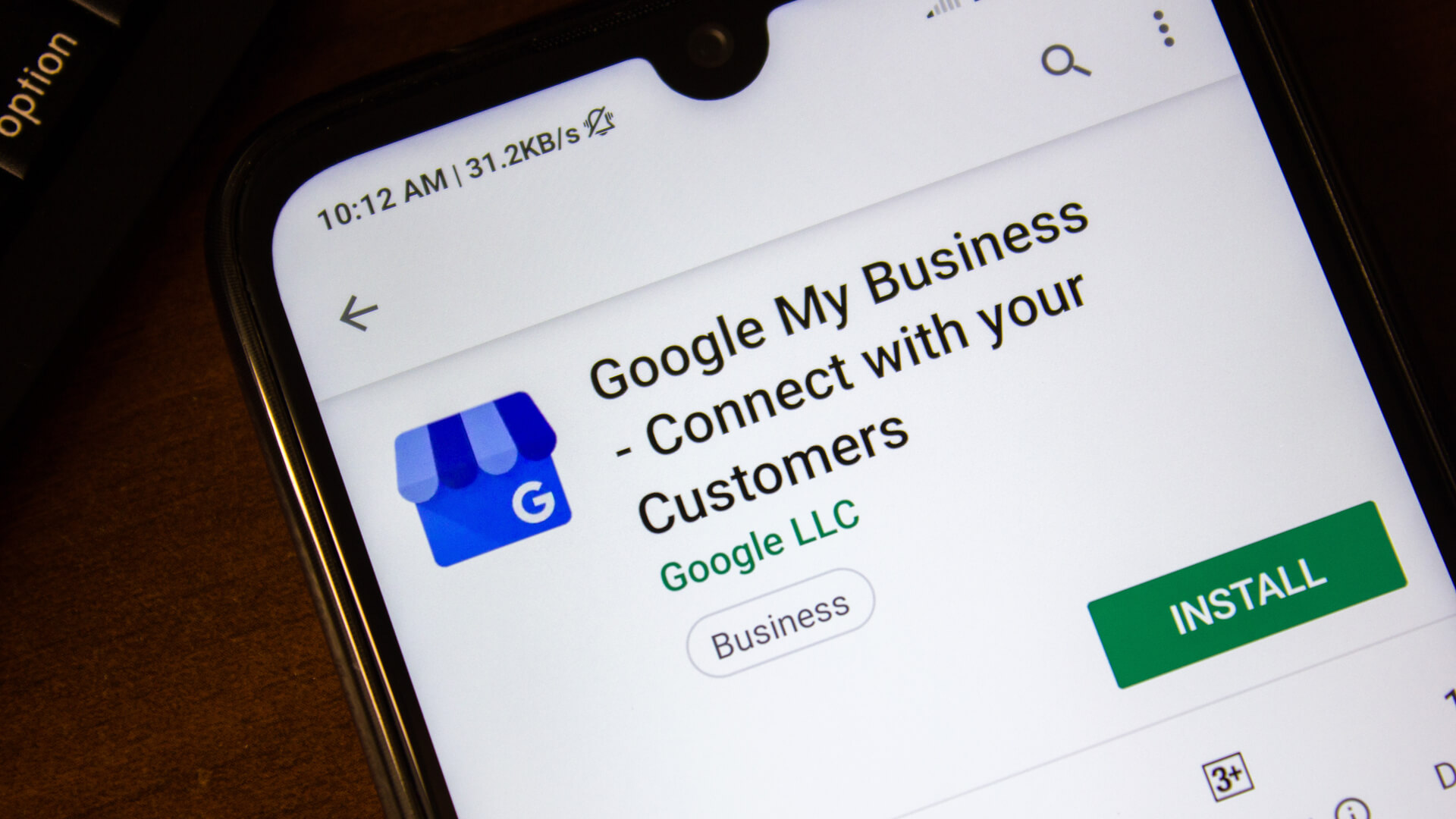
In the dynamic realm of the internet, where digital visibility is synonymous with success, the quest to improve Google presencehas become an imperative for individuals and businesses alike. Navigating the intricacies of search enginealgorithms and online landscapes is key to standing out in a sea of information. This article serves as your guide, offering actionable insights and strategies to enhance your online standing, elevate your visibility, and leave an indelible mark on the digital frontier.
Why You Need A Strong Online Presence
In the fast-paced digital landscape, a robust online presence is not merely a luxury but a strategic necessity for businesses aiming to thrive and flourish. Beyond the obvious advantages of brand awareness and reputation improvement, a strong online presence offers a myriad of benefits that can significantly impact your businessdynamics.
- Discoverability Matters - As 97% of consumers turn to online searches for local products and services, having a robust online presence ensures that your businessis discoverable by potential customers. It's an opportunity to connect with individuals who may not yet be aware of your existence, both when actively searching and during their daily online activities.
- Legitimacy in the Eyes of Consumers - The credibility of your business is heavily influenced by your online presence. A staggering 83% of consumers visit a physical store based on the information they find online. Providing comprehensive and consistent information across various online platforms establishes your legitimacy, instilling trust in potential customers and search engines alike.
- 24/7 Marketing Accessibility - With a strong online presence, your business becomes a perpetual marketing entity, operating 24/7. Prospective customers can discover, learn about, engage with, and contact your business at their convenience, regardless of their location or the device they are using. This flexibility ensures that you are present at every stage of the buyer's journey.
- Cost-Effective Digital Marketing - Investing in a strong online presence through digital marketing platforms provides a cost-effective means of reaching your target audience. These platforms offer valuable data insights, allowing you to analyze the performance of your strategies and allocate your budget with precision.
- Accelerate Conversions - Building a strong online presence increases your chances of converting leads into customers. With the average customer requiring seven encounters with a business before making a purchase, being present on multiple online channels creates more opportunities for these crucial engagements to occur.
- Earning Google's Trust - Google, the gatekeeper of online visibility, considers more than just your website when determining rankings. A consistent and authoritative online presence across various platforms enhances your credibility in the eyes of Google, contributing to higher search engine rankings.
- Tailor-Made Buyer Journey - In the digital era, where 63% of shopping journeys commence online, having a strong online presence allows you to tailor your engagement at different points in the buyer's journey. This adaptability is crucial, considering the diverse devices consumers use during their decision-making process.
- Flock Mentality and Synergy - The synergy among your various online assets and identities is a force multiplier. Each online channel complements the others, creating a collective impact far more potent than individual efforts. Embrace the flock mentality, understanding that the strength of your online presence lies in the harmony of your digital endeavors.
Optimize Your Website For Search Engines
In the vast digital landscape, optimizing your website for search engines is the foundational step toward enhancing your online visibility. Search Engine Optimization(SEO) is a dynamic and multifaceted approach that involves refining various elements of your website to align with the preferences of search engines like Google.
One crucial aspect of website optimization is ensuring that your site is user-friendly. A seamless, intuitive user experiencenot only engages visitors but also aligns with search engine algorithms that prioritize user satisfaction. Mobile responsiveness is equally paramount, as an increasing number of users access the internet via smartphones and tablets.
The strategic placement of relevant keywords throughout your website's contentis another integral part of SEO. Thoughtful incorporation of keywords in your page titles, meta descriptions, headers, and body content enhances the likelihood of your site being recognized by search engines for specific queries.
Descriptive and user-friendly URLs contribute to both user experience and search engine recognition. Clear, concise URLs that reflect the content of the page not only facilitate navigation for visitors but also provide search engines with valuable information about the page's subject matter.
The importance of high-quality, relevant content cannot be overstated. Regularly updating your website with informative, valuable content not only engages your audience but also signals to search engines that your site is active and authoritative in its niche.
An often overlooked but crucial aspect of website optimization is the technical SEOcomponents. This includes optimizing your website's loading speed, ensuring proper indexing of your pages, and creating a sitemap that guides search engine crawlers through your site's structure.
Finally, building a network of internal links within your website enhances navigation and helps search engines understand the hierarchyand relationships between different pages. Additionally, obtaining high-quality external linksfrom reputable sources can significantly boost your site's credibility in the eyes of search engines.
Create High-Quality, Relevant Content
Before diving into content creation, it's crucial to understand your target audience. What are their needs, preferences, and pain points? Conducting thorough audience research enables you to tailor your content to address the specific interests and concerns of your audience.
Integrate strategic keyword research into your content creation process. Identify the terms and phrases your audience is likely to use when searching for information related to your niche. Thoughtful incorporation of these keywords in your content can enhance its visibility in search engine results.
Stand out from the crowd by offering original and unique content. Avoid duplicating information that can be found elsewhere on the web. Whether you're creating blog posts, articles, videos, or infographics, bring a fresh perspective or add value in a way that distinguishes your content from competitors.
Present your content in an engaging and easily digestible format. Use clear headings, subheadings, and concise paragraphs to improve readability. Break up the text with visuals such as images, infographics, and videos to enhance engagement and provide a more comprehensive understanding of the topic.
Identify the challenges or questions your audience commonly faces, and tailor your content to address these pain points. Providing solutions and valuable insights positions your content as a go-to resource, fostering trust and loyalty among your audience.
Consistency is key in content creation. Establish a regular publishing schedule to keep your audience engaged and demonstrate reliability. Whether it's weekly blog posts, monthly newsletters, or daily social mediaupdates, a consistent flow of content reinforces your brand presence.
Utilize Google My Business
The first step is to claim and verify your business on Google My Business. Ensure that all your business information is accurate, including your business name, address, phone number, website, and operating hours. This step is crucial for appearing in local search results and providing potential customers with up-to-date information.
Craft a compelling business profile that highlights what makes your business unique. Use high-quality images that showcase your products, services, and the overall ambiance of your establishment. A visually appealing profile not only attracts attention but also instills confidence in potential customers.
Encourage satisfied customers to leave reviews on your GMB listing. Positive reviews and high ratings not only influence potential customers but also play a role in Google's local search algorithm. Respond to reviews, both positive and negative, to demonstrate your commitment to customer satisfaction.
Maintain accuracy in your business information. If there are any changes in your address, phone number, or business hours, update your GMB listing promptly. Consistency in information across all platforms, both online and offline, contributes to a positive user experience.
Specify your service areas if your business operates in multiple locations. Additionally, utilize attributes to highlight specific features of your business, such as whether it's women-led, offers free Wi-Fi, or has outdoor seating. These details help potential customers make informed decisions.
Enable messaging on your GMB listing to allow customers to communicate with you directly. If applicable, integrate booking features to enable customers to schedule appointments or reservations directly through your GMB profile.
Social Media Engagement
Maintain a consistent brand identity across all your social media channels. This includes using the same profile picture, cover photo, and bio information. Consistency fosters recognition and trust among your audience.
Authenticity is key in social media engagement. Be genuine, transparent, and responsive. Engage with comments and messages promptly, showcasing that there's a real person behind the brand or profile.
Strategically use hashtags to expand the reach of your content. Research trending and relevant hashtags in your industry to tap into larger conversations. However, avoid overusing them; a few well-chosen hashtags can be more effective than an abundance of unrelated ones.
Encourage your audience to create and share content related to your brand. User-generated content not only provides authentic testimonials but also increases your brand's visibility as users share their experiences.
Contests and giveaways are effective tools for boosting engagement. Encourage users to participate by liking, sharing, or commenting on your posts. This not only increases your reach but also creates excitement and enthusiasm among your audience.
Leverage live video features on platforms like Instagram, Facebook, or YouTube. Live videos create a sense of immediacy and allow for real-time interaction with your audience. Consider hosting Q&A sessions, product launches, or behind-the-scenesglimpses.
Consider partnering with influencersin your industry. Influencers have established credibility and a loyal following, making their endorsement valuable. Collaborations can introduce your brand to a wider audience and enhance your social media engagement.
Social media is dynamic, with trends evolving rapidly. Stay informed about emerging trends, memes, and popular culture relevant to your audience. Being current and responsive to trends can boost your visibility and relevance.
Timing is crucial in social media engagement. Use scheduling tools to post content when your audience is most active. This may involve experimenting with posting times and days to identify optimal engagement periods.
Respond To Customer Reviews
Timeliness is key when it comes to responding to customer reviews. Aim to reply to reviews, especially negative ones, as promptly as possible. This shows that you value customer feedback and are proactive in addressing concerns.
Personalize your responses by addressing the reviewer by their name. This small gesture adds a human touch and makes the interaction feel more genuine. Avoid generic or automated responses, as they can come across as insincere.
Express gratitude for positive reviews. Acknowledge the specific feedback they provided and let them know that you appreciate their support. This not only strengthens your relationship with satisfied customers but also encourages others to leave positive reviews.
For negative reviews, start by expressing sincere apologies for any inconvenience or dissatisfaction. Demonstrate empathy by acknowledging the customer's experience and assuring them that their concerns are being taken seriously.
If the issue is complex or requires more detailed discussion, consider taking the conversation offline. Provide a contact email or phone number where the customer can reach out directly to resolve the matter privately. This shows a commitment to addressing concerns professionally.
In your response, address specific concerns raised by the customer. This demonstrates that you've carefully read their feedback and are actively working to resolve any issues. Be transparent about any steps you're taking to improve or rectify the situation.
Maintain a professional tone in all responses, even when faced with challenging or emotional reviews. Avoid getting defensive or engaging in confrontational language. A composed and professional response reflects positively on your business.
Encourage customers, both positive and negative reviewers, to provide additional feedback or reach out directly if they have further concerns. This shows a commitment to continuous improvement and customer satisfaction.
Infuse your brand's personality into your responses. Whether your brand is known for being friendly, informative, or humorous, let your tone align with your overall brand identity. This helps in creating a consistent online presence.
Example Positive Response
"Hi [Customer Name],
Thank you so much for taking the time to leave us a positive review! We're thrilled to hear that you had a great experience with our [product/service]. Your feedback means the world to us, and we look forward to serving you again soon. If there's anything specific you loved about your experience, we'd love to hear more!
Best,
[Your Business Name]
Example Negative Response
"Hi [Customer Name],
We're genuinely sorry to hear about your experience, and we appreciate you bringing this to our attention. We apologize for any inconvenience you may have faced. Our team is looking into the matter, and we would love the opportunity to discuss this further to better understand and address your concerns. Could you please contact us at [contact information] at your earliest convenience?
Thank you,
[Your Business Name]"
Add Pictures And Videos
Integrate high-quality images and videos into your website's content to enhance the user experience. Whether it's product images, infographics, or informative videos, visually appealing content not only captures the audience's attention but also contributes to a more visually engaging and informative website.
Utilize the visual storytelling feature on Google My Business to showcase the personality of your business. Share images and videos that highlight your team, products, or services. This not only adds visual interest to your GMB listing but also provides potential customers with a more immersive preview of what your business offers.
Incorporate visually compelling content into your social media strategy. Share eye-catching images, infographics, and videos across platforms like Instagram, Facebook, and Twitter. Visual content tends to generate more engagement and shares, increasing the likelihood of your content being discovered on various social channels.
Create and optimize a YouTube channel for your business. YouTube is the second-largest search engine, and videos often appear in Google search results. Regularly upload relevant videos, such as tutorials, product demonstrations, or behind-the-scenes footage. This can significantly contribute to your overall Google presence.
Enhance the visibility of your written content by incorporating visuals within blog posts and articles. Images, infographics, and embedded videos break up the text, making the content more digestible and appealing to readers. This can contribute to a lower bounce rate and increased time spent on your site, both of which positively impact search engine rankings.
Encourage satisfied customers to share visual testimonials or reviews. This could include images of them using your products or brief video testimonials. Visual endorsements add credibility to your business and can be shared across various online platforms, contributing to a positive online reputation.
Build Quality Backlinks
The foundation of quality backlinksis exceptional content. Craft content that is informative, relevant, and valuable to your target audience. Content that stands out is more likely to be shared and linked to by other websites.
Identify reputable websites within your industry and offer to contribute guest posts. Guest posting allows you to showcase your expertise and provides an opportunity to include links back to your site. Ensure that the content you contribute is unique, relevant, and adds value to the host website's audience.
Connect with influencers and thought leaders in your industry. Engage with their content, share their articles, and establish a relationship. Once you've built rapport, you can politely request a link to your relevant content if it aligns with their interests and audience.
Identify broken links on reputable websites within your niche. Reach out to the website owner or manager, alerting them to the broken link, and suggest your content as a suitable replacement. This provides a win-win situation: you help them fix a broken link, and they link to your valuable content.
Engage in forums and online communities relevant to your industry. Contribute meaningful insights and participate in discussions. Many forums allow you to include a link in your forum signature or within your responses, providing an opportunity for backlinks.
Identify high-performing content in your industry and create even more valuable, comprehensive, and up-to-date content on the same topic. Reach out to websites that link to the original content, notifying them of your superior resource. This technique often results in backlinks to your improved content.
Ensure your business is listed accurately in local directories and citation sites. Local citations, including your business name, address, and phone number, can contribute to local SEOand provide valuable backlinks.
Analyze the backlink profiles of your competitors. Identify the sites linking to them and explore opportunities to acquire similar backlinks. Tools like Ahrefs or SEMrush can assist in competitor backlink analysis.
Optimize For Local Search
Incorporate relevant local keywords in your website content, meta tags, and headers. This helps search engines understand the geographical focus of your business. Include the name of your city, region, or neighborhood in your content naturally.
Encourage customers to leave positive reviews on platforms like Google, Yelp, and other industry-specific review sites. Respond promptly and professionally to all reviews, both positive and negative. Positive reviews can enhance your local reputation while addressing negatives demonstrates responsiveness.
Ensure consistent business information across online directories and citation sites. This includes your business name, address, phone number (NAP), and other relevant details. Consistency in citations builds trust with search engines and helps improve local search rankings.
If your business operates in multiple locations, create dedicated location pages on your website. Each page should include specific details about the location, such as address, phone number, business hours, and any unique offerings or events.
Create content that caters to local interests, events, and news. This can include blog posts, articles, or videos that highlight your involvement in the community or showcase local expertise. This not only engages your local audience but also signals relevance to search engines.
Implement schema markupon your website. This structured data helps search engines understand specific details about your business, such as location, reviews, and operating hours. This can enhance the appearance of your business in search results with rich snippets.
Embed Google Maps on your website to make it easy for visitors to find your physical location. This also helps Google understand the geographical relevance of your business.
Monitor Your Google Analytics
Ensure that Google Analyticsis correctly set up on your website. If you haven't done this yet, sign up for a Google Analytics account, create a new property for your website, and install the tracking code on every page of your site. Familiarize yourself with key metrics that provide valuable insights into your website's performance:
- Traffic Sources -Understand where your website traffic is coming from, including organic search, direct visits, referral traffic, and social media.
- Pageviews -Track the total number of pages viewed on your site. This helps gauge overall user engagement.
- Bounce Rate -Monitor the percentage of visitors who navigate away from your site after viewing only one page. A high bounce rate may indicate issues with content or user experience.
- Conversion Rate -If you have defined goals or e-commerce tracking set up, monitor the conversion rate to understand how well your site is meeting its objectives.
- User Demographics -Explore user demographics such as location, age, and gender to better understand your audience.
Define and set up goals in Google Analytics that align with your business objectives. Whether it's completing a form, making a purchase, or spending a certain amount of time on a page, goals help you track user interactions that contribute to your website's success.
Explore the "Behavior" section in Google Analytics to understand how users navigate your site. Analyze the most visited pages, and the flow users take through your site and identify popular entry and exit pages.
Identify the pages that serve as entry points for users. Understanding which pages attract the most traffic can help you optimize these pages for better user engagement and conversions.
Understand your website's loading times by monitoring the Site Speed report. Slow-loading pages can negatively impact user experience and search engine rankings.
Utilize the real-time analytics feature to monitor current website activity. This is particularly useful during marketing campaigns or events to gauge immediate impact.
Explore the Behavior Flow report to visualize the paths users take through your site. Identify common user journeys and potential areas for improvement in navigation.
If you notice significant changes in your metrics, investigate the causes. Sudden drops in traffic, changes in user behavior, or spikes in bounce rate may indicate issues that need attention.
Integrate Google Analytics with other tools, such as Google Search Consoleand marketing platforms. This provides a more comprehensive view of your online presence and performance.
Mobile-Friendly Website
Implement a responsive web design that automatically adjusts your site's layout and content to fit various screen sizes. This ensures a consistent and user-friendly experience across desktops, tablets, and smartphones.
Simplify your website navigation for mobile users. Use a clear and concise menu structure, and consider implementing a hamburger menu for compact navigation on smaller screens. Ensure that buttons and links are easily tappable, allowing users to navigate effortlessly.
Mobile users often have limited patience for slow-loading pages. Optimize your website's performance by compressing images, leveraging browser caching, and minimizing HTTP requests. Tools like Google PageSpeed Insights can help identify areas for improvement.
Prioritize and streamline content for mobile users. Focus on the most important information and features, and consider using collapsible sections or accordions to present content in a more condensed format.
If your website includes forms, optimize them for mobile users. Use large, touch-friendly form fields and buttons. Minimize the number of form fields to reduce friction, and consider using auto-complete features where applicable.
Regularly test your website across various devices and browsers to ensure consistent functionality and appearance. Pay attention to different screen sizes, resolutions, and operating systems. Testing tools like BrowserStack or CrossBrowserTesting can assist in this process.
Choose readable fonts and font sizes for mobile screens. Avoid using small text that may be difficult to read on smaller devices. Maintain a good contrast between text and background for optimal readability.
Ensure that buttons and links are appropriately sized for touch interactions. Provide enough spacing between elements to prevent accidental clicks, and use touch-friendly button designs.
Optimize images for mobile devices by compressing them without sacrificing quality. Use responsive images that adapt to different screen sizes. This helps reduce page load times, contributing to a better user experience.
Implement mobile SEO best practices. Ensure that mobile versions of your pages are included in search engine indexing. Use mobile-friendly meta tags and follow Google's mobile-first indexing guidelines.
Set up mobile analytics to track user behavior on your mobile site. Analyze metrics such as bounce rate, page views, and conversion rates specifically for mobile users. Use this data to identify areas for improvement.
Frequently Asked Questions
What Is Google My Business, And How Does It Affect Online Presence?
Google My Business is a platform that allows businesses to manage their online presence on Google, including local search results. Optimizing GMB listings enhances visibility and provides essential business information to users.
How Does Social Media Contribute To Google Presence?
Active engagement on social media platforms positively influences Google presence by driving traffic, increasing brand awareness, and generating social signals that impact search engine rankings.
Is Mobile Optimization Crucial For Google Presence?
Yes, mobile optimization is essential for Google presence. With a growing number of users accessing the internet on mobile devices, Google prioritizes mobile-friendly websites in its search rankings.
Conclusion
In the ever-evolving landscape of online interactions, the importance of a robust Google presence cannot be overstated. By implementing the strategies discussed herein, you have the tools to optimize your digital footprint, making your mark in the vast expanses of the World Wide Web.
Remember, the journey to improving your Google presence is ongoing, requiring adaptability and a commitment to staying ahead of the curve. So, seize the opportunities that effective online visibility brings, and propel your digital presence to new heights. Elevate your Google presence and embrace the possibilities that a strengthened online footprint can bring to your endeavors.





